The world of technology upgrades every day. What seemed cutting-edge yesterday is often outdated by tomorrow. In this relentless cycle, businesses striving to stay modern and competitive face constant pressure to choose tech that is not only current but also reliable and future-proof.
For digital product teams, this raises a vital question: Is your tech stack truly built for where you’re headed or is it stuck in the past?
Maybe you’ve launched your MVP, gained early traction, and moved fast to beat the market. But now, friction appears performance bottlenecks, slower releases, scaling challenges, or a growing mismatch between your product’s needs and your underlying tech.
You’re not alone. BCG finds 70% of digital transformations fall short, often because early technology choices were reactive rather than strategic. Stripe estimates $1.5 trillion in annual productivity losses due to inefficient development, often rooted in foundational missteps.
Choosing a tech stack isn’t just a technical decision; it’s a strategic one. Teams often chase trends or replicate others without aligning with their unique vision, team strengths, and growth plans. The result? Short-term wins lead to long-term trade-offs.
This guide offers a practical framework to help you select the right tech stack for your product’s stage and ambitions, setting you up for lasting agility, performance, and growth.
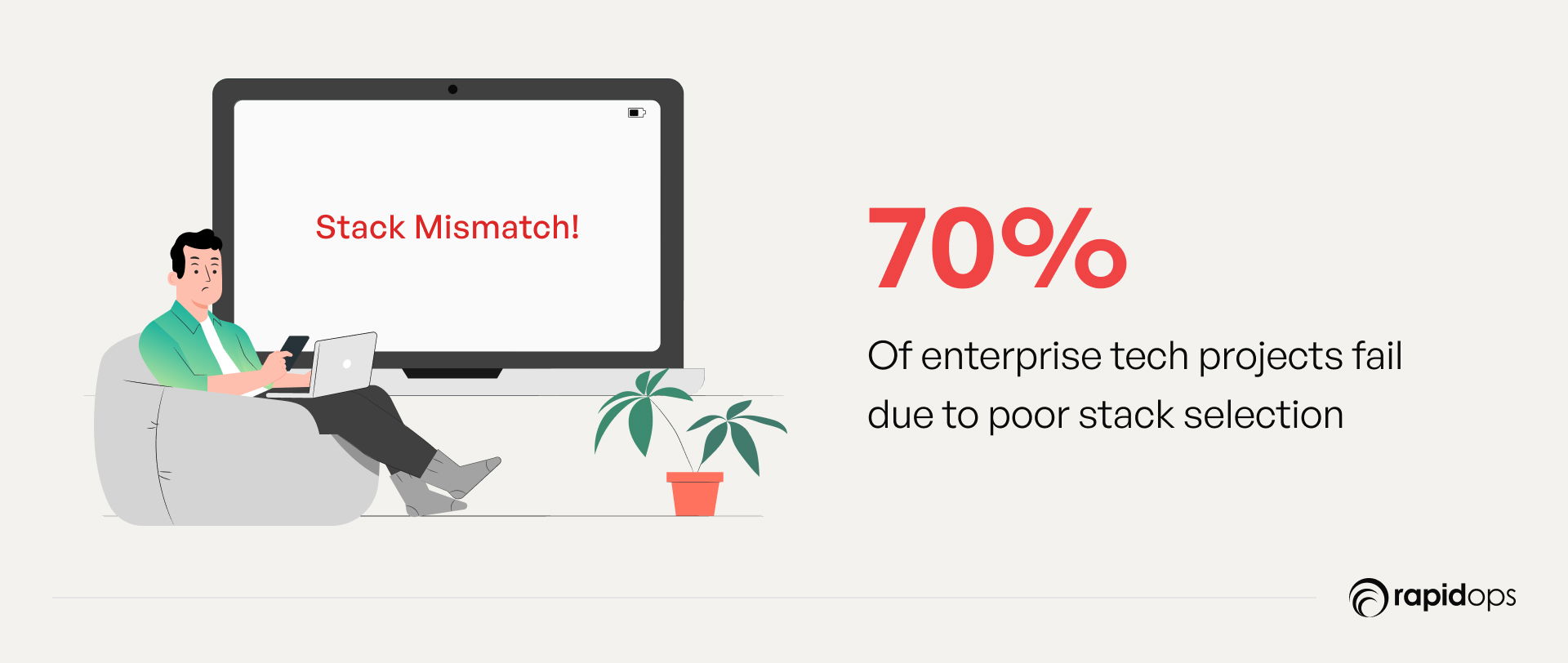
Components of tech stack
Choosing the right tech stack begins with understanding what you're selecting and why it matters. This section breaks down each layer of a typical digital product tech stack, outlining the key decisions you’ll face, what trade-offs to consider, and how each component aligns with your product goals, business model, and long-term vision.

1. Frontend technologies (User interface layer)
The frontend is the digital front door to your product, where user experience, performance, and brand perception come together. It’s more than just design; it’s a strategic layer that directly impacts user engagement, search visibility, and long-term scalability.
At a high level, frontend architectures generally follow three models:
- Single-page applications (SPAs): Ideal for highly interactive platforms, such as SaaS dashboards or internal tools. They provide a seamless user experience but may require additional efforts to optimize SEO.
- Multi-page applications (MPAs): Ideal for content-rich, SEO-focused platforms such as eCommerce or media sites, where discoverability is crucial.
- Hybrid models (SSR/SSG): Combining the strengths of both frameworks, like Next.js and Nuxt.js, enables dynamic performance alongside strong SEO capabilities.
Across these models, common frontend technologies include:
- Languages: HTML, CSS, JavaScript/TypeScript
- Frameworks: React, Vue, Angular
- Performance & UX enhancements: Code splitting, lazy loading, responsive design, and accessibility best practices
Ultimately, your frontend layer should prioritize performance, accessibility, SEO-readiness, and maintainability, because this is where every user experience begins.
2. Backend technologies (Logic and data layer)
The backend is the operational core of your digital product, where logic executes, data flows, and scale is either enabled or limited. It determines how your platform responds under pressure, integrates with systems, and evolves with business demands.
Language & runtime selection:
- Node.js powers real-time, event-driven applications with high concurrency needs, which is ideal for modern SaaS and collaborative platforms.
- Python/Django accelerates development for AI/ML-driven products and analytics-heavy platforms.
- .NET (C#) offers enterprise-grade capabilities, compliance support, and robust security favored in finance, healthcare, and government sectors.
- Golang delivers performance efficiency and is built for distributed cloud-native systems.
Choose based on the use case, scalability, hiring market, and system lifespan.
Architecture models:
- Monolithic setups are faster to deploy but hinder agility at scale.
- Microservices support modular growth, fault tolerance, and team autonomy but increase operational complexity.
APIs: REST vs GraphQL
- REST is dependable and standardized. GraphQL enables precise, efficient data handling that is better suited for complex frontend demands.
- Every backend decision affects cost efficiency, performance, time-to-market, and future adaptability. The right stack isn’t just technical; it’s a strategic asset for long-term growth.
3. Databases and storage
Your data layer is the backbone of your product’s intelligence, enabling everything from real-time transactions to historical analytics. The database you choose will directly influence system reliability, response times, scalability, and compliance.
SQL vs. NoSQL:
- SQL databases like PostgreSQL and MS SQL Server are ideal for structured data models where consistency, accuracy, and transactional integrity are critical. Fintech platforms, ERPs, and systems with audit or compliance requirements benefit from SQL’s robust schema enforcement, ACID compliance, and powerful query capabilities.
- NoSQL databases such as MongoDB or DynamoDB support high-speed writes, flexible schemas, and distributed scalability, ideal for IoT platforms, dynamic content feeds, personalization engines, or unstructured data at scale.
Key business-aligned factors to evaluate:
- Data consistency vs speed and scale
- Query complexity vs schema agility
- Security, backup, and compliance readiness
- Cost predictability across storage tiers
The right decision isn’t about SQL vs. NoSQL, it’s about aligning data architecture with business intent, growth velocity, and operational risk. A future-ready product starts with a storage strategy that supports innovation while safeguarding performance and data integrity.
4. DevOps, hosting, and infrastructure
This layer defines how fast your product moves, how resilient it is under pressure, and how well it adapts as the business grows. DevOps and infrastructure decisions aren't just IT concerns; they shape release velocity, uptime, scalability, and cost control.
Cloud platforms like AWS, Azure, and GCP offer elastic infrastructure, global reach, and rich services. But success lies in matching the provider to your compliance needs, ecosystem fit, and cost dynamics, from predictable reserved instances to usage-based serverless pricing.
Containers (Docker) and orchestration tools (Kubernetes) enable modular, portable deployments, which are essential for scaling across environments, isolating services, and enabling zero-downtime rollouts.
CI/CD pipelines accelerate innovation by automating code integration, testing, and delivery. This reduces manual risk, ensures consistent quality, and supports faster, safer iteration cycles.
Hosting models must reflect your workload and growth stage:
- Serverless = agility and cost-efficiency for event-driven workloads
- PaaS = rapid delivery with managed infrastructure
- VMs = control and customizability for complex legacy systems
Well-architected DevOps and infrastructure strategies empower your teams, reduce operational risk, and keep your product responsive to both user demand and business change.
5. Third-party tools and integrations
Third-party tools accelerate development by adding specialized capabilities without reinventing core functions. They enable faster product launches and help maintain focus on strategic innovation rather than building basic infrastructure.
Key examples include payment gateways like Stripe, messaging platforms such as Twilio, analytics tools like Mixpanel, and CRM systems such as Salesmate. While these tools and platforms offer speed and functionality, selecting the right ones requires evaluating how they fit into your broader technology ecosystem.
Critical factors to consider:
- Modularity: Ensure the tool can be replaced or upgraded without disrupting operations, preserving flexibility as your business evolves.
- Integration effort: Balance the initial and ongoing development resources needed to integrate and maintain the tool effectively.
- Compliance: Verify that tools meet industry-specific regulations to protect data and reduce legal risks.
- Vendor dependency: Assess risks related to pricing changes, roadmap shifts, or ecosystem lock-in that could affect your agility and costs.
Choosing the right integrations strategically supports scalable growth, operational resilience, and sustained competitive advantage, essential for leadership to future-proof their technology investments.
What is the right tech stack?
The right tech stack is not defined by popularity or convention. It’s characterized by alignment. It’s the deliberate combination of technologies that supports your product vision, elevates user experience, and advances your business strategy with clarity and purpose.
In the digital-first world, your tech stack is more than a technical foundation. It’s a strategic lever. When thoughtfully designed, it becomes a quiet force that accelerates outcomes, reduces complexity, and positions your organization to lead with agility and confidence.
Defining the right stack: Alignment over trends
At its core, the right tech stack aligns across three critical dimensions:
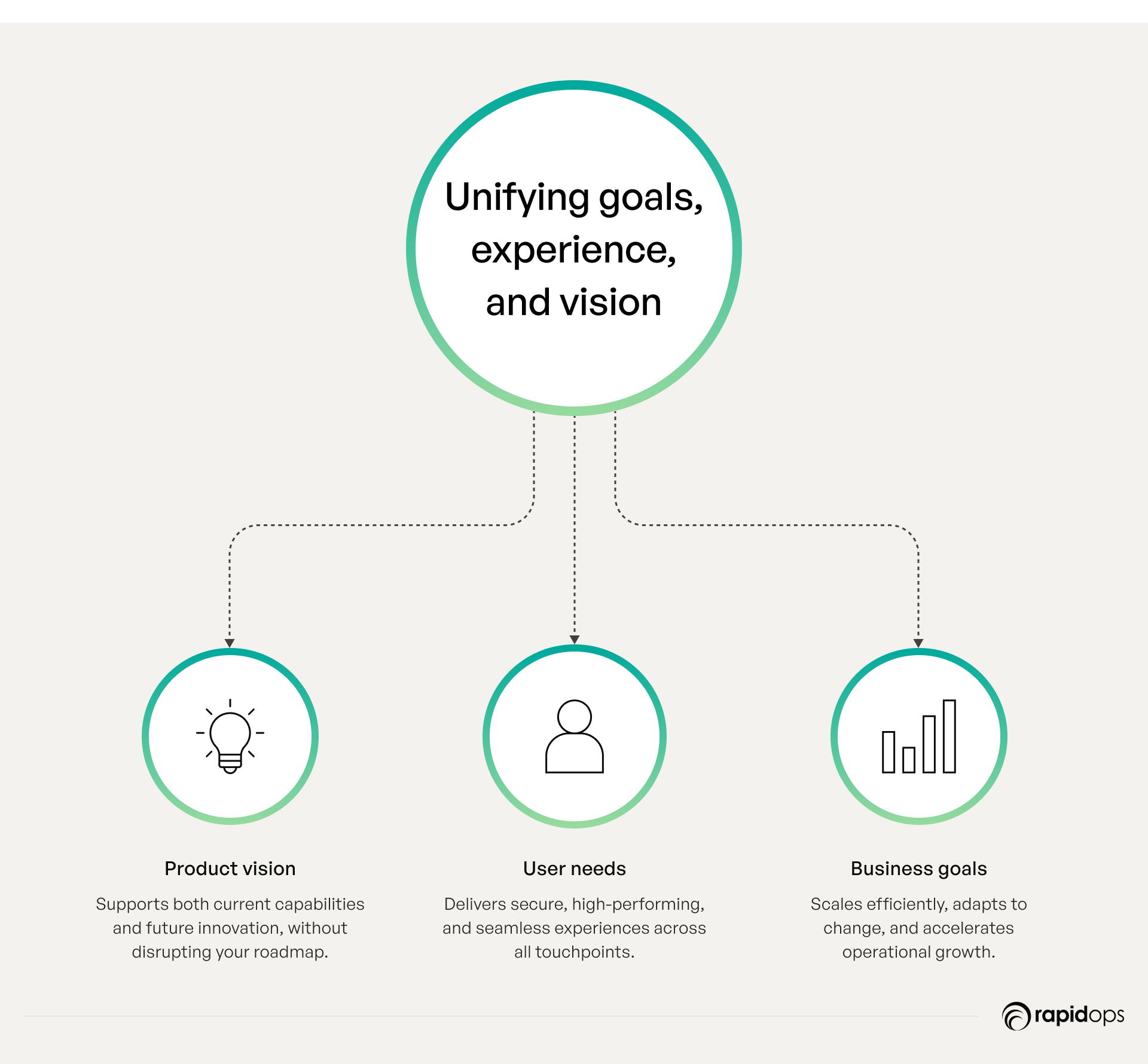
- Product vision: It supports both the current and future state of your offerings, enabling innovation without disruption.
- User needs: It delivers consistent performance, security, and seamless experiences across platforms and touchpoints.
- Business goals: It scales in step with your growth, adapts to evolving priorities, and drives operational efficiency.
This alignment ensures that your technology decisions are rooted not just in functionality but in long-term strategic relevance.
Core attributes of the “right” stack
Several characteristics consistently define stacks that perform well under real-world demands. These attributes reflect how well your technology serves your goals, not just how it behaves in isolation:
Scalability
The stack is designed to grow, whether that means supporting more users, handling greater data volumes, or expanding across markets without compromising integrity or speed.
Maintainability
Systems remain flexible and clean, allowing teams to enhance, iterate, and deploy with minimal friction. This supports continuous improvement and faster delivery cycles.
Performance
Applications remain fast, stable, and responsive even under pressure. Performance is architected from the start, ensuring a seamless experience at every stage.
Team fit
The stack complements your team’s capabilities and workflows, enabling developers to build with confidence and velocity. Tools are adopted based on strength, not trend.
Cost-effectiveness
Every component offers enduring value, not just in licensing or hosting costs but also in developer productivity, speed to market, and long-term sustainability.
Each of these traits reflects a deeper truth: the right stack isn’t a fixed answer; it’s a living system built to evolve as you do.
Context shapes the stack
Every business faces unique factors, regulations, customer needs, legacy systems, and culture that serve as blueprints, not barriers. A right-sized tech stack respects this context, aligning with where you are today and where you aim to be tomorrow. Whether focused on scale, speed, or security, it’s built with clear intent, not assumptions. That’s why following trends or peers without reflection often misaligns your stack. It must mirror your priorities, not theirs.
When the tech stack is right, it becomes nearly invisible. It clears the path for teams to move faster, solve more complex problems, and pursue ambitious goals with greater clarity. It doesn’t just support your strategy; it helps shape it. And that’s what makes it right.
Why you need to choose the right tech stack
Your tech stack is more than code; it’s the strategic engine behind your digital product success. The right choice fuels speed, resilience, and growth. It aligns technology with vision, helping you move faster, scale smarter, and stay ahead in a world where adaptability is everything.
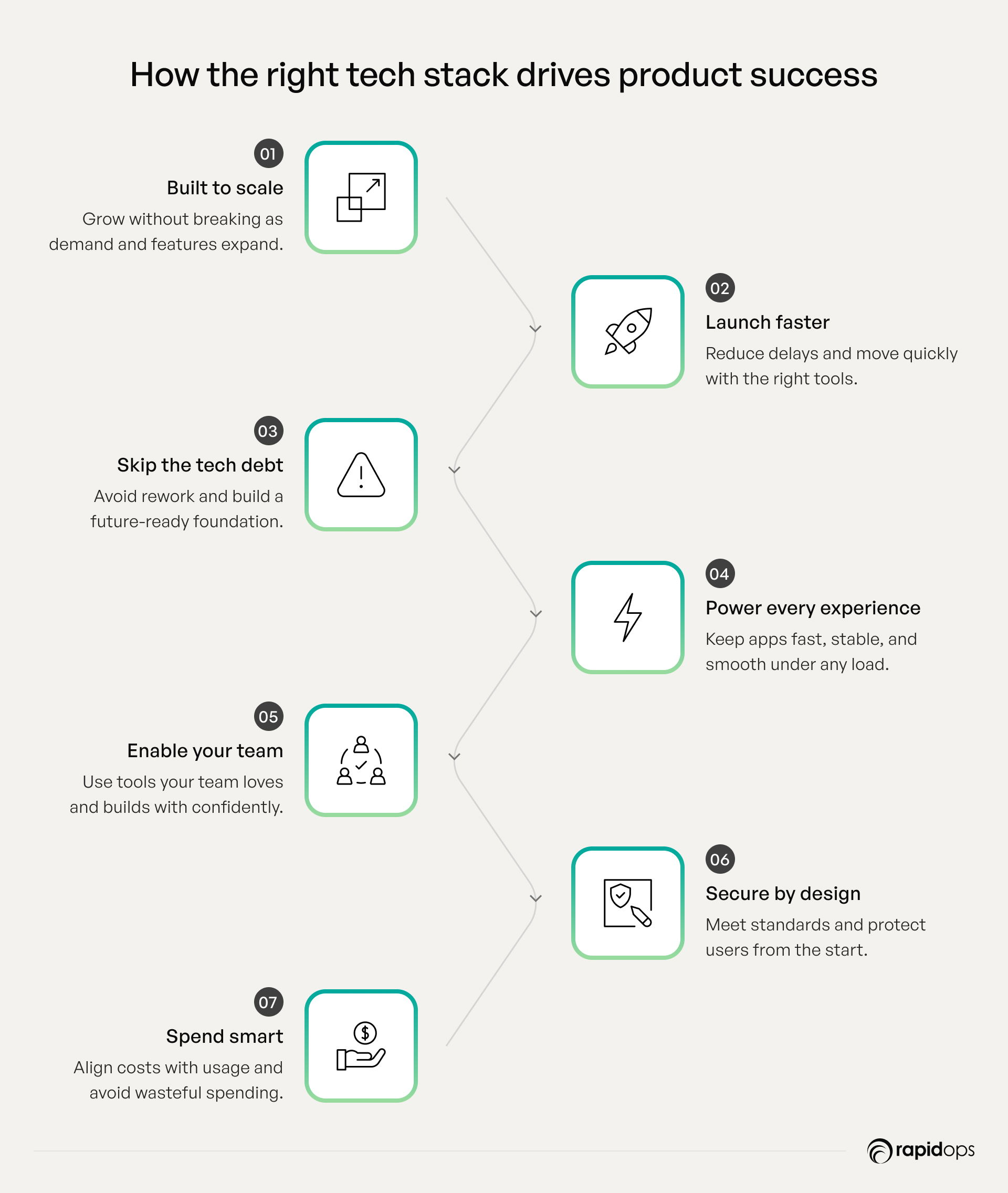
1. Fuel scalable growth from day one
Every ambitious product is built with growth in mind, but growth isn’t just about acquiring more users; it’s about your product’s ability to evolve, adapt, and handle increasing complexity without breaking. The right tech stack lays the foundation for that growth. It enables modular development, supports feature expansion, and handles user surges without compromising stability.
Whether you plan to scale vertically with deeper capabilities or horizontally into new geographies or markets, a scalable stack ensures that growth is a momentum builder, not the burden of a system. It makes you feel prepared and ready for the growth that lies ahead.
2. Accelerate your time-to-market
Speed is a strategic advantage. The faster you get to market, the faster you can test, learn, and refine your product. But moving fast doesn’t mean cutting corners, it means choosing technologies, frameworks, and platforms that reduce setup friction, support automation, and allow your team to work in parallel without dependency bottlenecks.
A thoughtfully selected tech stack empowers rapid iterations, simplifies integration with third-party services, and ensures your go-to-market timeline supports your business objectives.
3. Avoid accumulating technical debt
Early poor tech decisions tend to show up later, as blockers, instability, or rework that drains time and budget. An unsuitable stack might get you through the MVP stage, but it often leads to tangled codebases, scalability issues, or security vulnerabilities down the road.
Choosing the right tech stack from the outset helps you avoid these traps. It allows you to build a clean, maintainable architecture that supports long-term agility, not short-term hacks, giving you a sense of security and confidence in your decisions.
4. Deliver reliable, high-performance experiences
In a world where milliseconds matter, downtime costs, revenue, performance and reliability aren’t negotiable. The tech stack you choose must be capable of sustaining fast load times, seamless user interactions, and predictable behavior even under peak loads.
This includes selecting the right databases, backend frameworks, and cloud infrastructure tailored to your specific workload. A resilient, performance-optimized foundation ensures you’re not just functional you’re exceptional every time a user interacts with your product.
5. Empower your teams with the right tools
Technology isn’t just about what your product can do; it’s also about how efficiently your team can build it. A modern, well-documented, and widely adopted tech stack accelerates development, testing, deployment, and monitoring.
By reducing context switching and fragmented workflows, it lets engineers focus on building features instead of wrestling with outdated tools. The right tech stack supports automation and fosters a strong DevOps culture, unlocking your team’s potential for faster, safer releases.
6. Strengthen compliance and minimize operational risk
As your product scales, managing compliance and operational risks is critical. A robust tech stack with built-in encryption, access controls, monitoring, and audit trails simplifies meeting standards like GDPR and HIPAA.
Resilient infrastructure, such as container orchestration and zero-downtime deployments, enhances system reliability, ensuring your business stays prepared, secure, and resilient in a complex regulatory landscape.
7. Optimize long-term cost efficiency
Technology choices impact more than build speed; they shape your long-term cost efficiency. An inefficient tech stack can lead to resource waste, vendor lock-in, and higher expenses.
A well-architected tech stack balances cost and performance by aligning infrastructure, tools, and service models such as serverless, PaaS, or containerized workloads, with actual usage patterns, ensuring sustainable, scalable tech investments as your business evolves.
Key evaluation criteria for choosing the right tech stack
The right tech stack isn’t just a set of tools, it’s the backbone of your product’s success. Every decision you make should solve a real business need, support your product’s core offering, and scale with confidence. This section helps you cut through the noise and evaluate what truly matters.
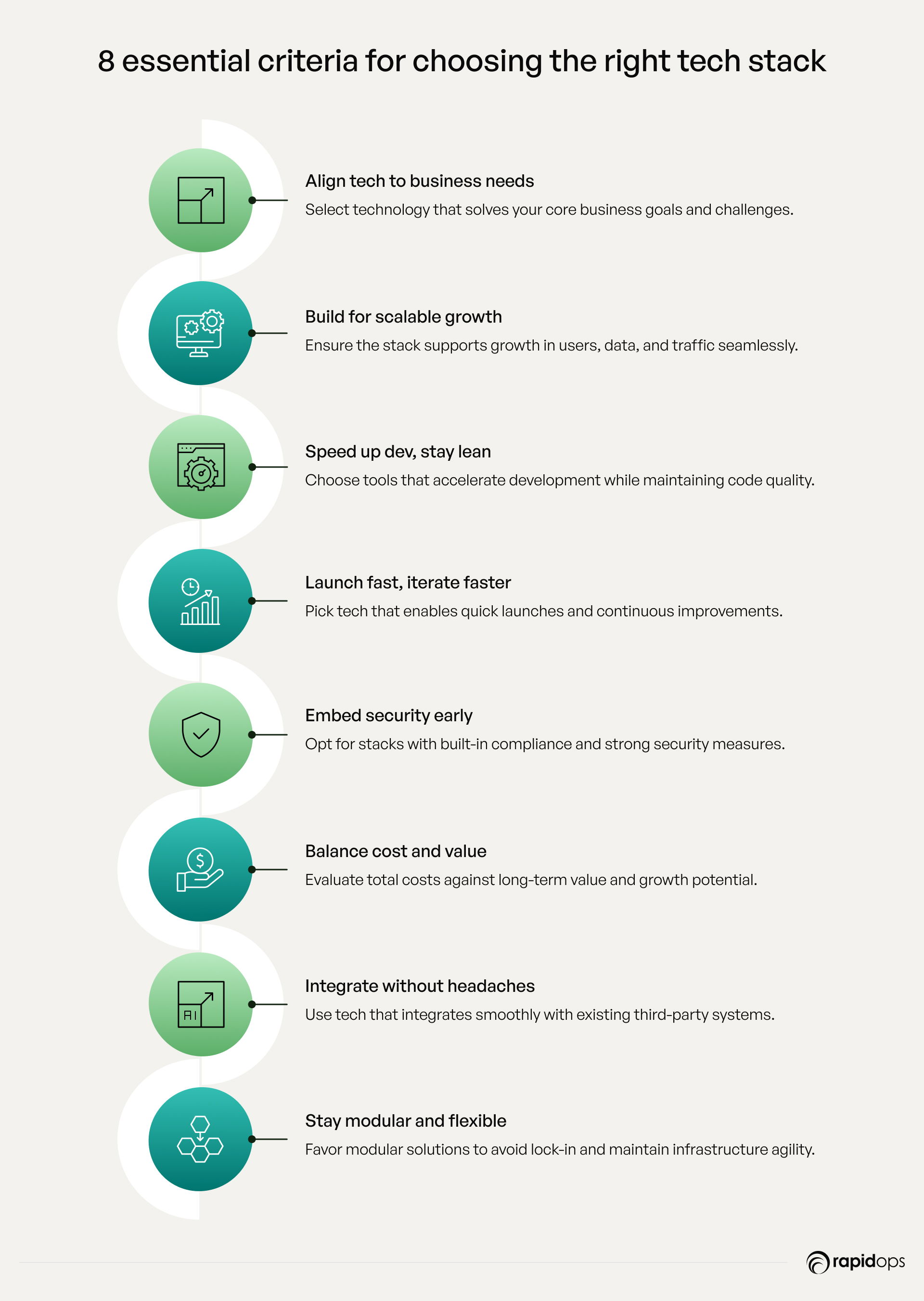
1. Business problem fit and value alignment
This is the non-negotiable starting point. Before evaluating scalability or cost, the first question must be:
Can this stack solve the exact problem your product is designed to solve?
Many tech choices fail not because they’re “bad” but because they’re misaligned with the problem at hand. Your goal should be to map the product’s primary value proposition, whether that’s real-time collaboration, ultra-fast search, data visualization, or predictive intelligence and ask: does this tech enable it?
Example:
Suppose your app requires real-time document editing, like Google Docs. A traditional LAMP stack (Linux, Apache, MySQL, PHP) may struggle here, as it’s request-response-based. Instead, Node.js combined with WebSockets is better suited for handling real-time bidirectional data flow.
- Use it if You need live updates, user interaction, or event-driven workflows.
- Avoid it if Your product doesn’t depend on real-time processing or collaboration.
2. Scalability and performance under load
Your product may start small, but its tech foundation should be ready to scale, whether that means handling millions of users, spikes in API requests, or petabytes of data. Evaluate whether the stack can support both horizontal scaling (more instances) and vertical scaling (more power per instance).
Example:
MongoDB offers horizontal scalability and flexible schemas, making it perfect for fast-growing platforms with unstructured or semi-structured data (e.g., e-commerce catalogs or IoT data). However, for systems requiring strict relationships and complex joins like financial transaction platforms, PostgreSQL or Oracle is a better fit.
- Use it if you’re prioritizing rapid growth with loosely structured data.
- Avoid it if your product depends on tight data consistency and relational logic.
3. Developer velocity and maintainability
Even the most capable tech stack is a liability if it slows down your team or becomes too complex to manage. Your stack should support clean code and modular architecture and have a robust ecosystem with strong community and documentation.
Example:
Ruby on Rails is famously productive for launching MVPs quickly, with its opinionated structure and “convention over configuration” approach. But as systems become large and componentized, frameworks like Spring Boot (Java) or NestJS (Node.js) offer better long-term maintainability and control.
- Use it if you’re validating ideas or need to iterate fast early on.
- Avoid it if Your roadmap includes complex integrations or microservice architecture.
4. Speed to market and iteration agility
Today’s competitive advantage lies in speed. Your tech stack should enable rapid development, testing, and deployment cycles through hot-reloading, automation, and flexible tooling.
Example:
Flutter with Firebase lets you build cross-platform apps with a single codebase and launch fast. But if you require deep native performance, say, for a mobile game or device-intensive app, native stacks like Swift or Kotlin will provide more control.
- Use it if you need to go live quickly across platforms.
- Avoid it if your use case demands deep platform-native integration or real-time rendering.
5. Security and compliance readiness
Security should be an integral part of your stack, not an afterthought. Especially if you operate in regulated industries (finance, healthcare, edtech), your tech must support authentication, encryption, access controls, and auditable logs.
Example:
Firebase offers fast authentication for consumer apps. But if you’re building an enterprise-grade product that must support complex RBAC models or zero-trust architecture, Spring Security with OAuth 2.0 is more appropriate.
- Use it if you’re building low-risk, high-speed consumer apps.
- Avoid it if you deal with sensitive data or require granular user access and audit trails.
6. Cost of development and ownership
Evaluate both capex (initial development cost) and opex (maintenance, hosting, support). Open-source options often reduce upfront expenses but may demand in-house expertise. Enterprise solutions may be costly but come with stronger SLAs and managed services.
Example:
.NET Core with Azure offers enterprise-grade performance and deep Microsoft integration that is great for enterprises. But it comes at a higher infrastructure and licensing cost. A Node.js + MongoDB stack on AWS/GCP might be more economical and agile, especially for startups.
- Use it if you require enterprise-level support and deep system integration.
- Avoid it if you’re optimizing for lean operations and faster ROI.
7. Integration and ecosystem compatibility
A modern tech stack must play well with others. Whether you're connecting CRMs, analytics platforms, payment systems, or internal microservices, your stack should support REST, GraphQL, event-driven architectures, and common third-party SDKs.
Example:
Node.js with Express or Fastify on AWS Lambda offers flexibility and cloud-agnostic scalability, making it a smart choice for teams building in a modular, composable environment.
- Use it if you're working within a clearly defined ecosystem and want faster time-to-integration.
- Avoid it if your ecosystem is highly diverse or expected to evolve rapidly, you’ll need a more abstraction-friendly or platform-neutral approach.
8. Modularity and vendor independence
As your product grows, you’ll want to change parts of your stack without rewriting everything. Prioritize technologies that offer containerization, service decomposition, and cloud-agnostic deployment.
Example:
Using Docker and Kubernetes gives you full control to deploy on AWS, GCP, Azure, or on-prem. On the other hand, fully managed services like AWS Amplify or Firebase may create convenience early but lead to lock-in later.
- Use it if you value architectural freedom and control over infrastructure.
- Avoid it if your growth strategy requires switching providers or hybrid cloud adoption.
Proven framework for tech stack evaluation
Every successful product starts with intentional technology choices. This proven framework distills practical insights into a clear method for selecting a tech stack that evolves alongside your product, team, and business objectives.
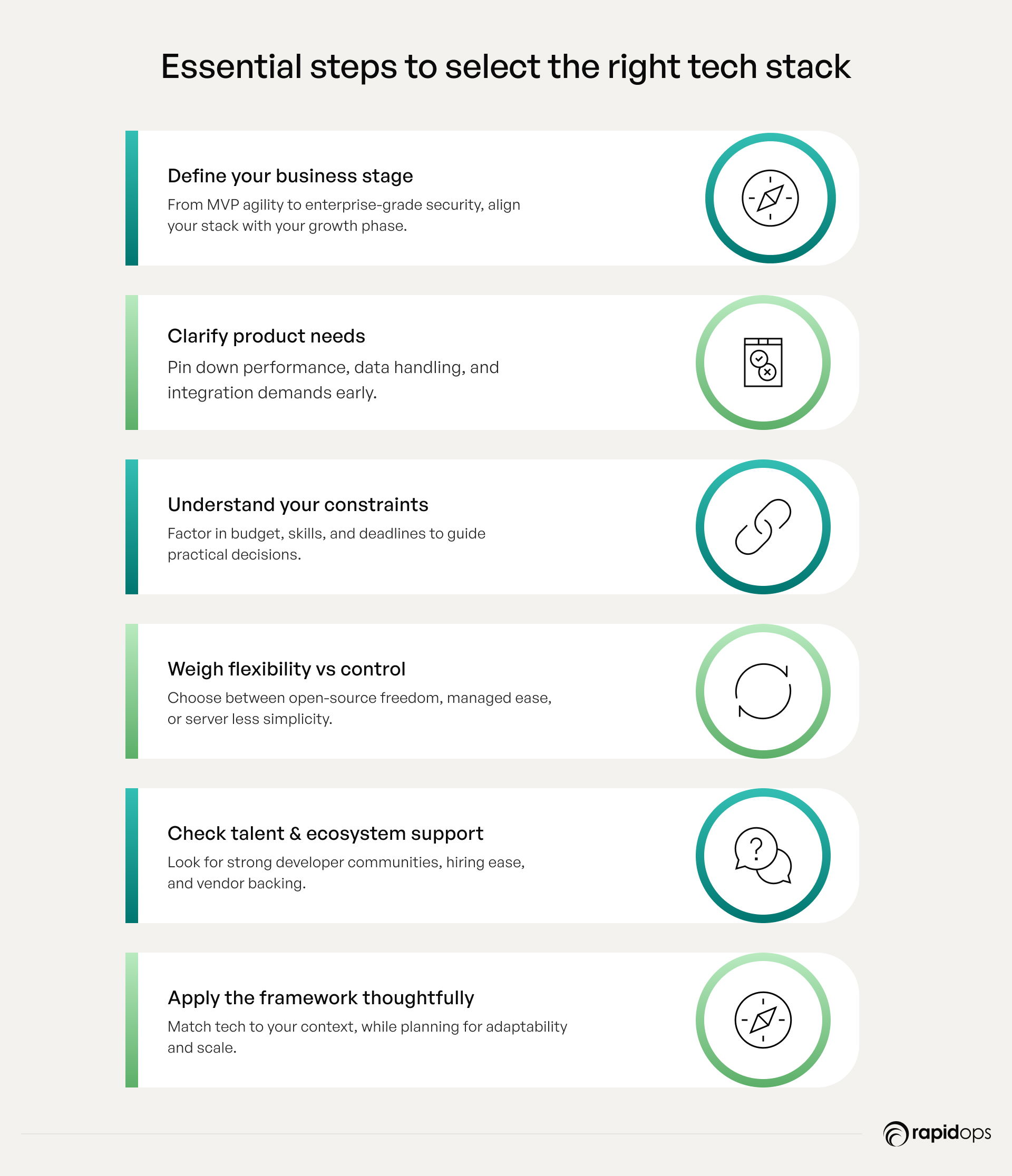
Align with the product stage
Your product’s lifecycle shapes your tech priorities. Early-stage MVPs demand speed and flexibility, favoring rapid development tools. As you scale, resilience and maintainability become essential. At the enterprise level, compliance, integration, and governance take precedence to meet complex regulatory and operational needs.
Define core product requirement
A deep understanding of your product’s technical demands ensures your stack is purpose-built. Whether low latency, intricate integrations, or data throughput is key, select technologies that directly support these requirements, avoiding unnecessary complexity that doesn’t add value.
Account for constraints and capabilities
Real-world factors like budget, team expertise, and time-to-market shape your options. The best technology is only effective if your team can implement and maintain it efficiently. Choose tools that align with your current skills and financial resources while enabling rapid, reliable delivery.
Balance flexibility and control
Choosing between open-source, managed services, and serverless architectures requires evaluating your need for customization versus operational simplicity. Each model has trade-offs to select the approach that fits your capacity now and supports your future control requirements.
Assess ecosystem strength
A technology’s longevity depends on the community and vendor support behind it. Robust ecosystems accelerate development, reduce risks, and ensure talent availability, which is key for scaling and maintaining your tech stack over time without hindering innovation.
Choose technologies that enable future growth
Tech stack decisions must serve your long-term strategy, not just immediate goals. Prioritize scalable, adaptable tools that minimize technical debt and foster continuous innovation. When aligned, your stack becomes a competitive advantage that empowers growth rather than limits it.
Following this framework turns your tech stack decisions into powerful tools that empower your team, protect your investments, and set your product and business on a path to lasting success. It ensures your technology choices drive real innovation and sustainable growth.
Make every tech stack choice count
Choosing the right tech stack isn’t just a checkbox. It’s a foundational decision that shapes the future of your digital product strategy and business. Even with plenty of information available, this choice can feel daunting, especially without a dedicated technical team in-house. The pressure to balance innovation, stability, and growth can be overwhelming.
That’s why having a trusted partner who truly understands your business, goals, and unique challenges makes all the difference. It’s not about following trends; it’s about building a technological foundation that’s flexible, scalable, and supports your vision today and tomorrow.
At Rapidops, we’ve spent 16 years working closely with businesses across industries, guiding them through these complex decisions and turning technology choices into sustainable success. From strategy to launching high-performing digital products, we walk alongside you every step of the way. We listen, adapt, and deliver solutions tailored to your specific needs, not a one-size-fits-all approach.
If you’re unsure about your current tech stack or want to explore options to empower your teams and accelerate growth. Schedule a free consultation with one of our tech stack experts and get personalized, practical advice to move forward with confidence.
Frequently Asked Questions
How do we ensure the tech stack aligns with both short-term goals and long-term vision?
Start by understanding your immediate needs, speed, user feedback and launching your MVP. Then, connect these with future goals like scalability and smooth integration. Getting product, engineering, and business teams aligned early helps you choose technologies that deliver quick results now and support growth later, avoiding costly changes down the road.
How to tell If your tech stack is limiting product growth or agility
Slowing release cycles, rising tech debt, and complex integrations are key indicators. If your team spends more time maintaining than building, or struggles to onboard developers due to outdated tools, it’s a red flag. These signs suggest your stack is constraining innovation and responsiveness, both critical to growth. Identifying these friction points early helps avoid deeper structural issues later.
How can the wrong tech stack impact our business performance and scalability?
A poor tech stack choice affects speed, cost, and user experience. It can delay releases, increase technical overhead, and make it difficult to scale or adapt to new demands. Over time, this reduces your team’s ability to innovate, impacts customer satisfaction, and creates costly dependencies. The right stack isn’t just about building, it’s about scaling efficiently while staying competitive.
What are the cost considerations beyond initial development (TCO)?
Initial build cost is just the start. Consider infrastructure, support, licensing, security, maintenance, and developer onboarding when calculating total cost of ownership (TCO). A cheaper tool today may demand constant fixes or lack scalability, leading to higher long-term costs. Evaluating TCO ensures you invest in tools that support growth without draining resources as your product evolves.
How do we evaluate if our stack is future-ready for AI, automation, or personalization?
Look for modular, API-first, and cloud-native technologies that integrate easily with AI, automation tools, and real-time data systems. Your stack should support event-driven architecture, flexible data models, and scalable compute. A strong developer ecosystem and active community also signal long-term viability. Future-ready means being able to evolve fast, not rebuild every time your strategy shifts.

Rahul Chaudhary
Content Writer
With 5 years of experience in AI, software, and digital transformation, I’m passionate about making complex concepts easy to understand and apply. I create content that speaks to business leaders, offering practical, data-driven solutions that help you tackle real challenges and make informed decisions that drive growth.

Let’s build the next big thing!
Share your ideas and vision with us to explore your digital opportunities
Similar Stories
- Engineering
- undefined Mins
- September 2022

- Engineering
- undefined Mins
- January 2016
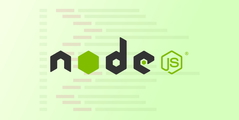
- Engineering
- 5 Mins
- November 2015


Receive articles like this in your mailbox
Sign up to get weekly insights & inspiration in your inbox.
